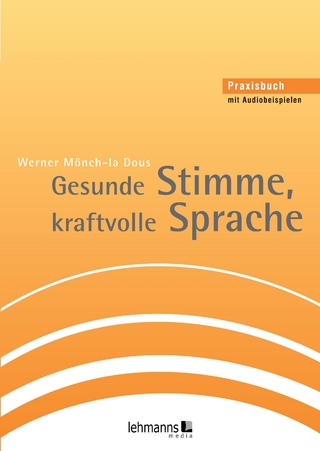
Teaching Grammar Through Writing
Pearson (Verlag)
978-0-13-256599-8 (ISBN)
Rather than overwhelming students with too many structures, constructions, and rules, the book’s goal is simplification, showing teachers what the essential elements of grammar are that students need to learn to use to become better writers.
Dr. Keith Polette is a Professor of English at the University of Texas at El Paso. Dr. Polette received the UTEP College of Liberal Arts Award for Excellence in Teaching and Research, the UT System Chancellor’s Council Award for Excellence in Teaching, and was recognized by the Texas State Reading Association as an Outstanding Texas Author. Prior to moving to El Paso in 1995, Dr. Polette was a Mentor Teacher and an English/Language Arts teacher for both remedial and gifted students in St. Louis, Missouri. Dr. Polette has published over thirty articles in professional journals, eight books on teaching, and two books for children. His most recent publications are Read and Write It Out Loud: Guided Oral Literacy Strategies, Isabel and the Hungry Coyote, Paco and the Giant Chile Plant, and Moon Over The Mountain (Raven Tree Press). For the past twenty years, Dr. Polette has given keynote addresses and been a featured speaker at national, regional, and state literacy conferences, and at schools throughout the United States and Canada.
Contents
Introduction
Chapter 1
Word Works I: Nouns
Word Works II: Verbs
Word Works III: Pronouns
Word Works IV: Adjectives
Word Works V: Adverbs
Word Works VI: Prepositions
Word Works VII: Conjunctions
Chapter 2
Sentence Works I: Absolute Phrases
Sentence Works II: Gerund Phrases
Sentence Works III: Infinitive Phrases
Sentence Works IV: Prepositional Phrases
Sentence Works V: Participial Phrases
Sentence Works VI: Appositive Phrases
Sentence Works VII: Adjective Clauses
Sentence Works VIII: Adverbial Clauses
Sentence Works IX: Noun Clauses
Sentence Expanding
Sentence Combining
Sentence Matching
Sentence Sense
Chapter 3
Punctuation Points
The Comma
The Apostrophe
The Colon
The Exclamation Point
Quotation Marks
The Semicolon
Special Focus: The Comma Splice
The Hyphen
The Dash
What Is a Sentence?
Sentence Subjects
Sentence Predicates
Compound Subjects and Predicates
Direct Object
Indirect Object
Predicate Noun
Predicate Adjective
Parallel Structure in Sentences
Sentence Structures
Ten Sentence Patterns to Imitate
Sixteen Kinds of Sentences: Different Constructions for Different Purposes
Figurative Language
A Note on Voice
Chapter 4
Passages to Edit
Reading Closely and Carefully to Find and Fix Errors
Chapter 5
Poetry Patterns
Build-a-Name Poetry
Diamante
Wishing upon a Poem
Bio-Poem
Night Poem
Alliterative Poem
Alliterative Character Poem
Parts of Speech Poem
Adverb Poem
Another Parts of Speech Poem
Prepositional Phrase Poem
Participial Phrase Poem
Sentence Pattern Poems
Syllable Poems
Syllable Question Poem
Text Message Poem
Chapter 6
Acts of Writing: Putting It All Together with Process Writing
Five Recursive Steps in the Writing Process
Activities and Ideas to Support Poetry Writing
Writing Extensions
Appendix A
Ideas for Writing in the Content Areas
Writing about a Nonfiction Topic Using an Alliterative Pattern
Writing about Frogs (or a person, animal, object, or place): Alternative Acrostic Poems
Writing about Two Animals with a Contrast Pattern
Writing about People, Things, or Animals: So You Want to Be
The Five Good Things Pattern
Writing about a Nonfiction Topic Using an Informational Paragraph
The Contrast Paragraph
Writing a Character Analysis/Personality Trait Paragraph
Multi-Modal Character/Person Analysis Paragraph
Biographical Writing: Who Is the Real Walter Frederick Morrison?
Appendix B
Writing in Response to a Prompt: What Is a Hero?
Appendix C
Reproducible Masters
Works Cited
| Erscheint lt. Verlag | 17.6.2011 |
|---|---|
| Sprache | englisch |
| Maße | 220 x 275 mm |
| Gewicht | 471 g |
| Themenwelt | Schulbuch / Wörterbuch |
| Geisteswissenschaften ► Sprach- / Literaturwissenschaft ► Sprachwissenschaft | |
| Sozialwissenschaften ► Pädagogik ► Berufspädagogik | |
| Sozialwissenschaften ► Pädagogik ► Schulpädagogik / Grundschule | |
| ISBN-10 | 0-13-256599-4 / 0132565994 |
| ISBN-13 | 978-0-13-256599-8 / 9780132565998 |
| Zustand | Neuware |
| Haben Sie eine Frage zum Produkt? |
aus dem Bereich


